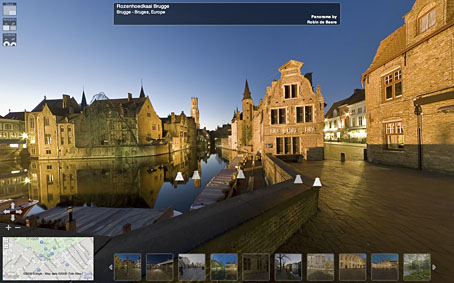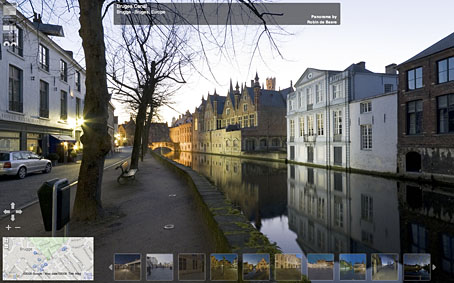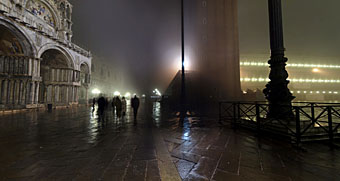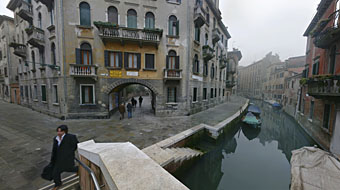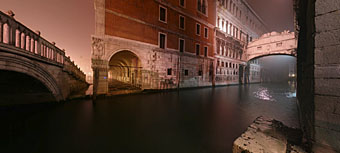The interview: Iain Sinclair | Beating the bounds of Hackney.
Category: {architecture}
Architecture
Passage des Panoramas
I thought I might have exhausted this line of pursuit until I decided to search for the Passage des Panoramas, one of the first of the Parisian arcades which so entranced Walter Benjamin. This particular arcade dates from 1799 and was named after the painted panoramas which used to be one of the attractions on an upper floor. The appropriately panoramic view comes from a page of 360º panoramas of some of the more attractive passages couverts of Paris and, as with previous examples here, these are best viewed using the full screen option. On my last trip to Paris I intended to visit some of the arcades but apart from one small place on the Champs-Élysées the ones I tracked down were all closed. Consequently, these photos are the next best thing to being there.
Elsewhere on { feuilleton }
• The panoramas archive
Previously on { feuilleton }
• Passages 2
• Passages
Bruges panoramas
Do you detect a theme here? The 360º Cities site which I linked to yesterday won’t be news to some since its panorama views are now incorporated into Google Earth. I hadn’t fully investigated it before, however, so I wasted some time today wandering the streets of Bruges almost as you would in a computer game thanks to the way the different panoramas are linked. Clicking the arrows or the thumbnail views means you’re immediately transported to the next location. (Needless to say this works best using the full screen option on a large monitor.) The photographs in this instance are by Robin de Baere.
Bruges is another of those waterlogged places with cobbled streets which so beguile me, hence the choice of a Belgian town over more obvious European locations. The light skies in the night shots—a result of long exposures—lend the empty streets some of the same mysterious atmosphere captured by René Magritte in his Empire of Light series. Magritte was Belgian, of course, so it’s rather fitting, as was Paul Delvaux, another painter of noctural mystery.
Empire of Light by René Magritte (1953–54).
Elsewhere on { feuilleton }
• The panoramas archive
Previously on { feuilleton }
• Bruges-la-Morte
• Taxandria, or Raoul Servais meets Paul Delvaux
Paris panoramas
Looking at panoramas of Venice yesterday reminded me of this panorama of my own which I pieced together after a trip to Paris two years ago. (See the very long version unsqueezed here.) The location was the small park at the point of the Île de la Cité where the Seine divides in two.
For some fully 360º panoramas of Paris there are plenty to choose from here, including a view from the top of the Eiffel Tower.
Elsewhere on { feuilleton }
• The panoramas archive
Venice panoramas
Piazza San Marco.
Gilles Vidal‘s 360º panoramas are justly celebrated but some of his photos benefit more from the location than others. The cathedral of St Cecilia is a great example of this, as is the city of Venice in this remarkable series of views. As well as showing a few less obvious locations, Vidal shows some of the more familiar sights in night views which are still fascinating due to the high quality of the pictures. The view of a misty Piazza San Marco (above) is wonderfully atmospheric.
Sestiere di Santa Croce.
Ponte dei Sospiri.
Elsewhere on { feuilleton }
• The panoramas archive
Previously on { feuilleton }
• Abelardo Morell’s camera obscura


